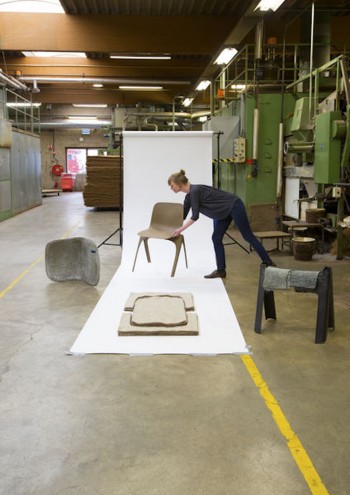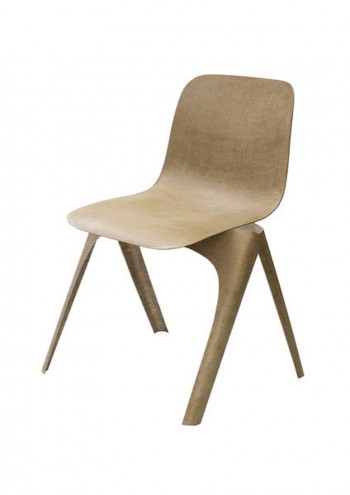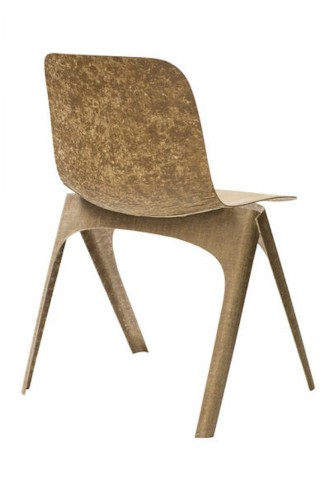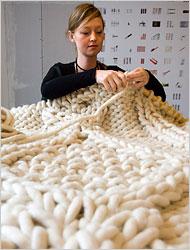Dutch designer Christien Meindertsma has a multi-pronged approach to responsible design. This Flax Chair shows off its molecular makeup: the woven flax fibres are clearly visible on the surface of the seat and the resulting grain texture reflects the earthy nature of the product.
Meindertsma uses the flax plant because it does not require much water to be grown and harvested. It is cultivated in a relatively low-maintenance way and thrives in cooler environments. Flax (or linseed) fibres carry qualities that are perfect for sculpting a durable sheet of material. The organic threads of the plant are lustrous and malleable.
Watch Christein Meindertsma's Design Indaba Talk on her love of raw materials.
As part of the Flax Chair's manufacturing process, these fibres are combined with polylactide, a kind of ecological plastic that is derived from the starch of sugar, cane and corn. The resulting material is then exposed to high torridity along with physical pressure to shape hardened hulls. It is a scant amount of ingredients together with a simple binding process that ensures that practically nothing is thrown away.
The utility of the flax plant is maximised and very little goes to waste in creating the Flax Chair. This prudent approach to design is echoed in the chic aesthetic style of the chair. The panels of the chair are smooth and feature uncomplicated curves.
Using biodegradable elements in tandem with an essentially clean construction process safeguards the ecological integrity of the components to the very end. The Flax Chair, at every stage of its life, is of the Earth.









